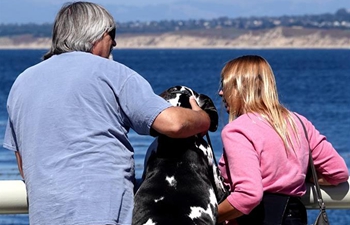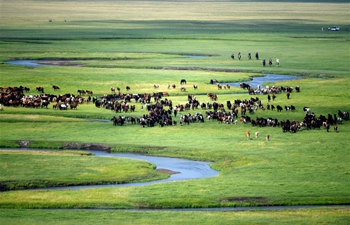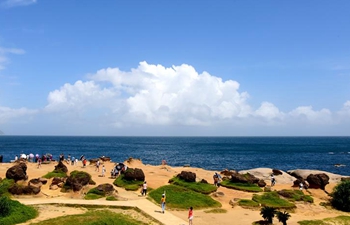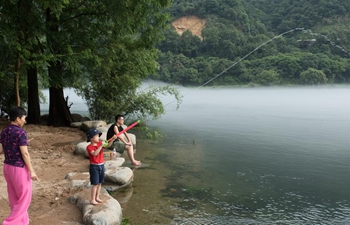NICOSIA, July 21 (Xinhua) -- An EU-funded drive to reduce the numbers of lionfish, an invasive marine species which have infested the coasts of Cyprus, seem to bear results, according to the testimony of divers on Sunday.
"We saw only one lionfish," said Sofia Petridou after a dive on the Zenobia wreck, a Swedish roll-on-roll-off ferry that sunk in 1980 off the southern city of Larnaca. Currently, it is one of the top 10 wreck dives in the world.
Sofia, an expert diver, was on the lookout for lionfish after a recent cull expedition which resulted in the removal of about 150 fish from inside and around the wreck.
"There were no lionfish left around to see," Sofia said.
Lionfish, the common name of Pterois miles, is normally a fish of the Indian and Pacific seas. The widening of the Suez Canal seems to have opened the flood gates for the fish to reach the Mediterranean about 12 years ago and increase in numbers, thanks to the fact that it has no known natural enemies.
The fish has an anti-predatory venomous defense system and also the ability to prey upon a wide range of fish and invertebrates. Adult lionfish produce about 30,000 eggs every four days, which means that each fish can lay up to two million eggs per year that float freely and are dispersed by the currents.
The warming of the water of the Mediterranean seems to have been another ally for the lionfish to establish its presence in such numbers that threaten the ecosystem of the region.
Large numbers of the fish were also reported from Lebanon, Turkey and Greece.
Cyprus's position in the eastern Mediterranean made it the first line of defense against the lionfish invasion when a four-year program was launched by the Life program and the Nature and Biodiversity section of the European Commission to control the numbers of the invader.
The program provides for culling the fish, which are slow-moving and do not flee in the presence of humans.
Up to now there have been several lionfish culling expeditions, mostly along the southeast coast of Cyprus, the latest being in the Cavo Creco area which is favored by tourists, and the Zenobia wreck, also a favored spot for diving.
Divers who set out from the Marina of Larnaca have even posted a "Wanted" poster of a lionfish.
The program also tries to promote lionfish as food as a way to control its population. And chefs have come out with recipes for its cooking: Deep fried, on the barbecue or as complimentary part of other dishes.
"Lionfish can be prepared in many different ways. On the grill, fried ... whichever way you want," said Larnaca chef Stelios Georgiou.
"As long as you remove the spine, which contains the venom, you can serve it like a normal fish," he said.
However, its brightly colored stripes and flowering pectoral fins which make it look exotic may be a factor for people not to like it as food, though the chefs say that it is not different from other fish.













